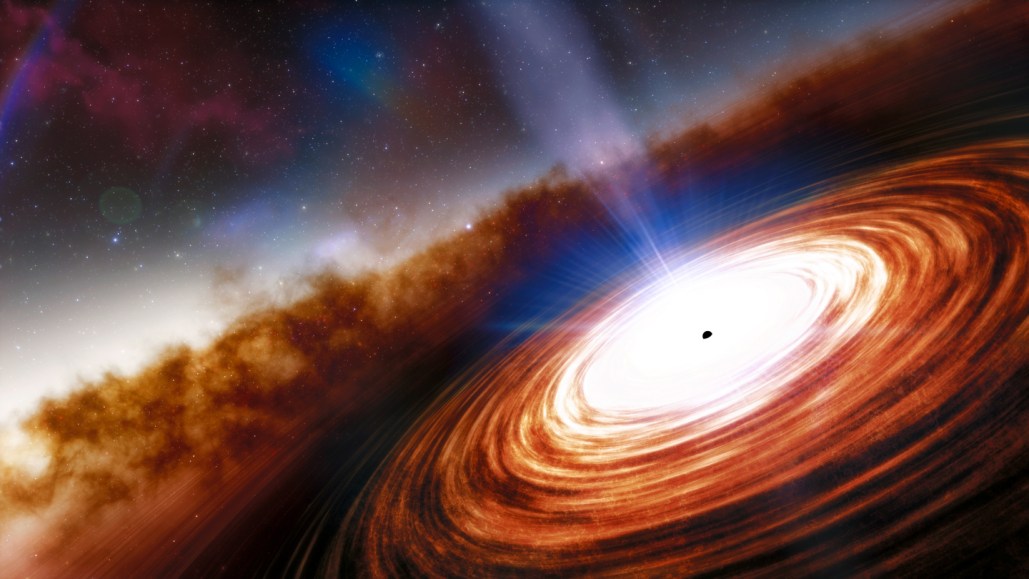The Formation and Rapid Growth of Supermassive Black Holes in the Early Universe
 SPACETER
SPACETER
Supermassive black holes (SMBHs) are enigmatic cosmic entities that reside at the centers of most galaxies, including our own Milky Way. Their formation and rapid growth remain a fascinating puzzle in astrophysics. In this blog, we delve into the processes that lead to the formation of SMBHs and explore the mechanisms behind their astonishingly rapid growth in the early universe.
Formation of Supermassive Black Holes:
The origins of SMBHs trace back to the early universe, a time when primordial gas clouds began to collapse under the influence of gravity. These collapsing clouds gave rise to the first generation of stars, known as Population III stars. These massive stars, with masses hundreds of times that of the Sun, burned brightly and lived short lives, culminating in dramatic supernova explosions.
During the collapse of these massive stars, if the core's mass exceeded a critical threshold, typically around 3 to 5 solar masses, it would undergo gravitational collapse, leading to the formation of a black hole. These initial black holes, known as seed black holes, served as the building blocks for the formation of SMBHs.
Rapid Growth Mechanisms:
The mystery lies in how these relatively small seed black holes grew into the behemoths that we observe in the centers of galaxies today, some with masses billions of times that of the Sun. Several mechanisms have been proposed to explain this rapid growth:
Accretion Disk Feeding:
One of the primary mechanisms responsible for the rapid growth of SMBHs is accretion disk feeding. As matter falls into the gravitational well of the SMBH, it forms an accretion disk—a swirling, disk-shaped structure of gas and dust. Friction within the disk generates tremendous heat, causing it to emit intense radiation across the electromagnetic spectrum, including X-rays.
The energy released during accretion is so immense that it can power quasars, the brightest and most distant objects in the universe. Quasars are believed to be powered by the accretion of matter onto SMBHs, leading to their rapid growth.
Major Galaxy Mergers:
Galaxy mergers, especially major mergers involving galaxies of similar mass, can play a significant role in fueling the growth of SMBHs. As galaxies collide and merge, the gas and dust within them are funneled towards the center, where they can feed the central SMBH. This influx of material can trigger intense bursts of accretion, leading to rapid growth in black hole mass.
Galaxy Interactions and Minor Mergers:
Even minor interactions between galaxies can disturb their gas content, leading to the formation of bars, spiral arms, and tidal tails. These interactions can channel gas towards the central regions of galaxies, where it can fuel the growth of the SMBH. While less dramatic than major mergers, these interactions can still contribute significantly to the growth of SMBHs over cosmic timescales.
Conclusion:
The formation and rapid growth of supermassive black holes represent one of the most intriguing puzzles in astrophysics. From their humble beginnings as seed black holes to the colossal entities that dominate the centers of galaxies, SMBHs continue to fascinate astronomers and cosmologists alike. Through ongoing observations and theoretical advancements, we continue to unravel the mysteries surrounding these enigmatic cosmic behemoths, shedding light on the fundamental processes that shape our universe.
Subscribe to my newsletter
Read articles from SPACETER directly inside your inbox. Subscribe to the newsletter, and don't miss out.
Written by
